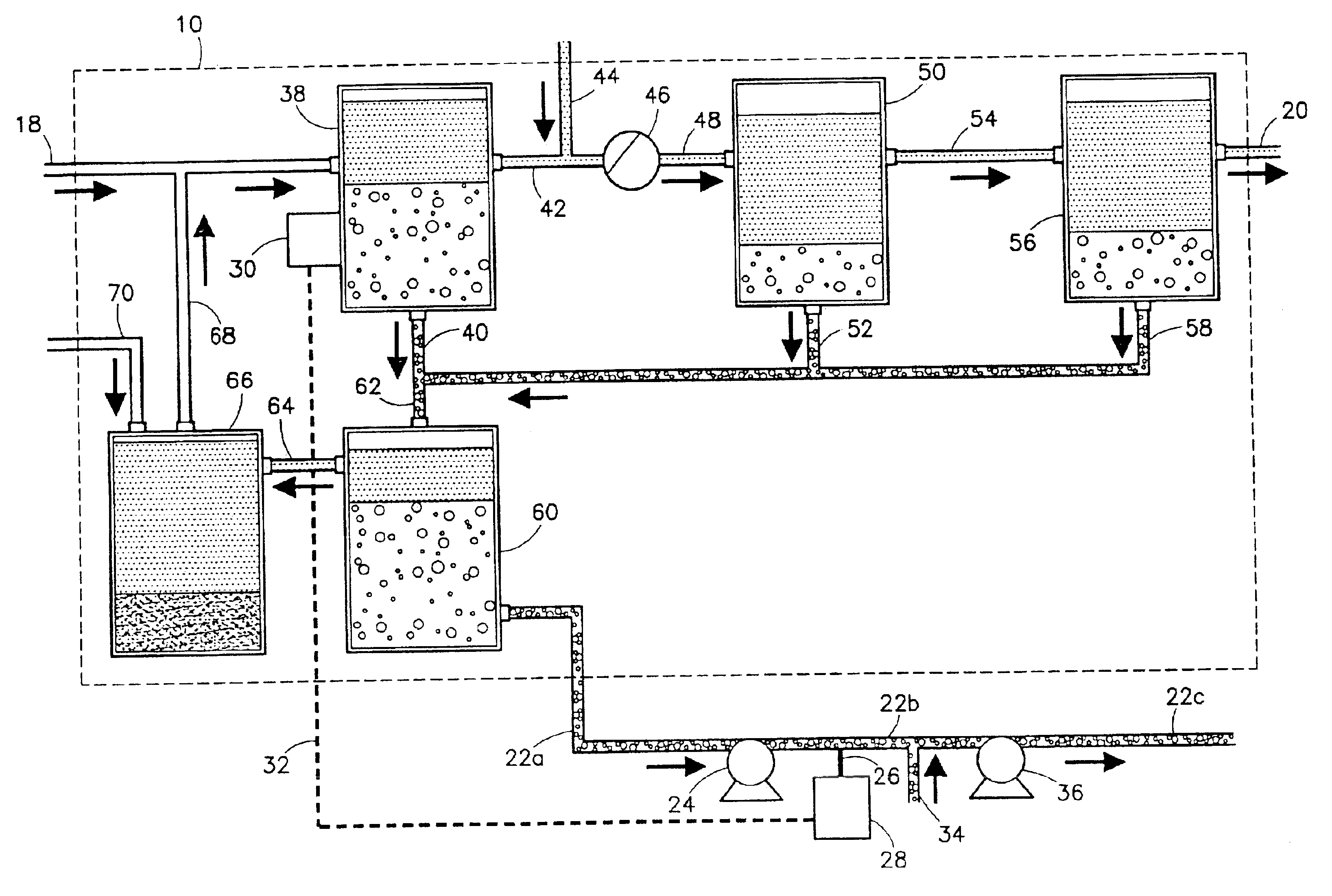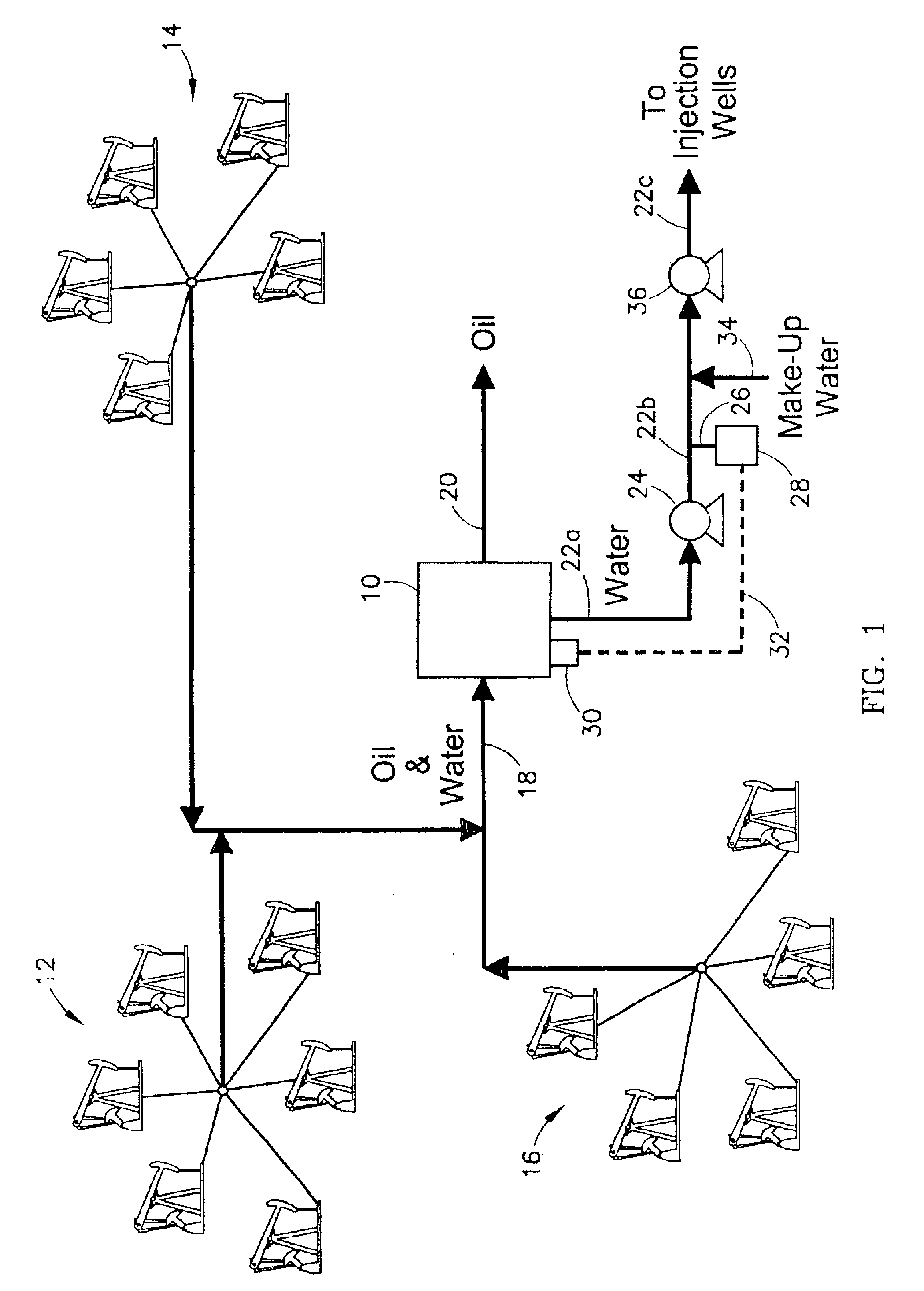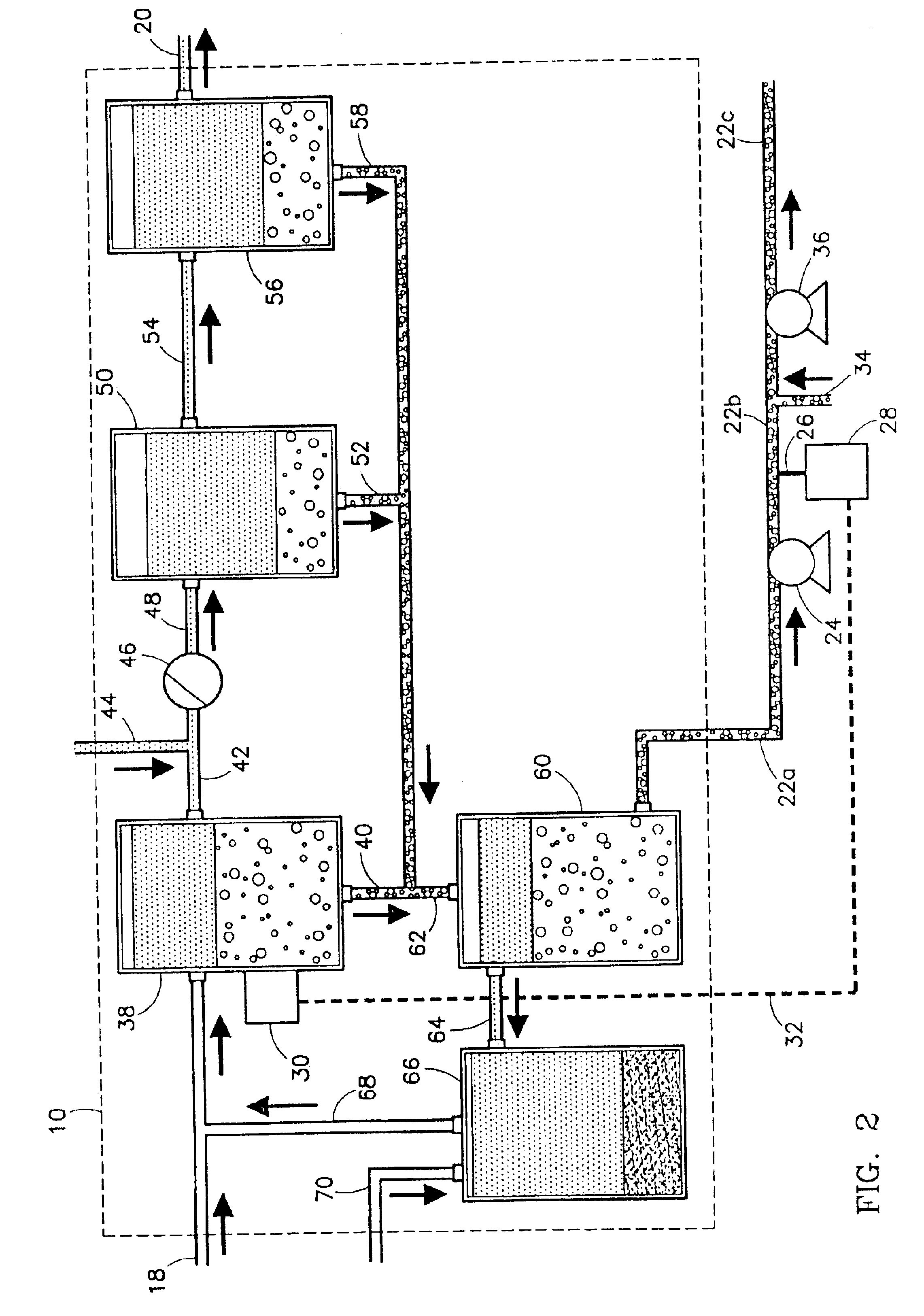Oil field separation facility control system utilizing total organic carbon analyzer
a technology of total organic carbon and control system, which is applied in the direction of separation process, ion exchanger, borehole/well accessories, etc., can solve the problems of oil stream being rejected by the operator of the pipeline and/or the refinery, loss of oil present in the water stream, and inconvenient sampling of the separated water stream. , to achieve the effect of accurate sampling
- Summary
- Abstract
- Description
- Claims
- Application Information
AI Technical Summary
Benefits of technology
Problems solved by technology
Method used
Image
Examples
Embodiment Construction
Referring initially to FIG. 1, an oil field separation facility 10 is illustrated as servicing several different oil fields, each including a number of individual wells. Produced oil and water from a first oil field 12, a second oil field 14, and a third oil field 16 are combined in a main conduit 18 and carried to separation facility 10. Although FIG. 1 shows separation facility 10 servicing only 16 individual wells, it is more typical for oil field separation facility 10 to service a greater number of individual wells (e.g., 50-500 wells). In separation facility 10, the produced oil and water mixture is separated into an oil-rich stream exiting separation facility 10 via an oil conduit 20 and a water-rich stream exiting separation facility 10 via a water conduit 22a.
Water conduit 22a carries the water-rich stream to an agitating means 24 which is operable to increase the turbulence of the water-rich stream. Agitating means 24 can be any apparatus for enhancing the physical mixing...
PUM
| Property | Measurement | Unit |
|---|---|---|
| Time | aaaaa | aaaaa |
| Time | aaaaa | aaaaa |
| Volume | aaaaa | aaaaa |
Abstract
Description
Claims
Application Information
 Login to View More
Login to View More - R&D
- Intellectual Property
- Life Sciences
- Materials
- Tech Scout
- Unparalleled Data Quality
- Higher Quality Content
- 60% Fewer Hallucinations
Browse by: Latest US Patents, China's latest patents, Technical Efficacy Thesaurus, Application Domain, Technology Topic, Popular Technical Reports.
© 2025 PatSnap. All rights reserved.Legal|Privacy policy|Modern Slavery Act Transparency Statement|Sitemap|About US| Contact US: help@patsnap.com



